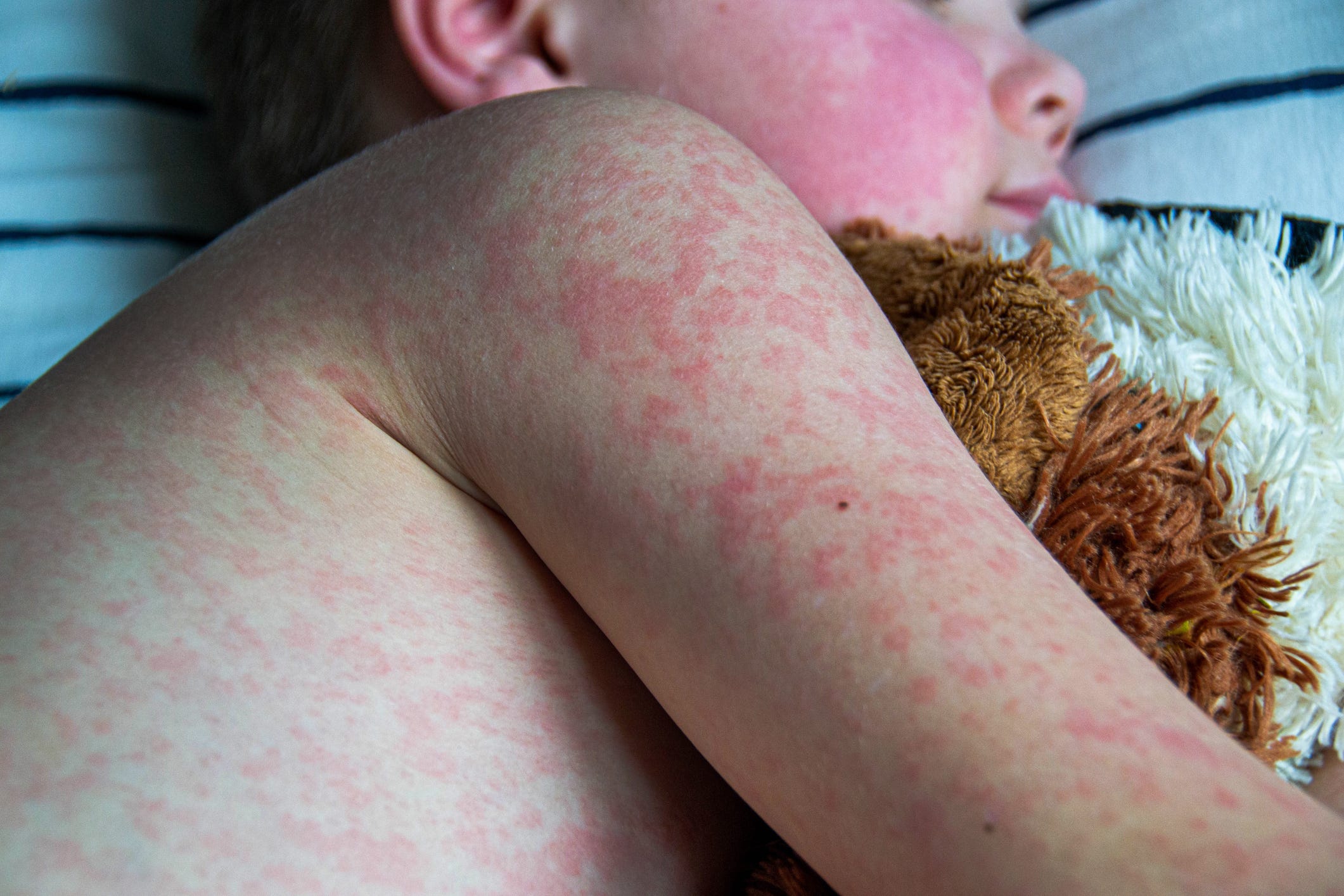
Measles Outbreak in West Texas: A Comprehensive Overview
Escalating Cases and Geographic Distribution
The measles outbreak in west Texas continues to spread, with a confirmed 58 infections reported as of Tuesday. The majority of cases (33) have been observed in children aged 5-17, with 15 cases among children aged 0-4. Gaines County bears the brunt of the outbreak, accounting for 45 infections, followed by nine in Terry County and one to two cases in Lubbock, Lynn, and Yoakum. Moreover, 13 patients have required hospitalization.
Predominant Unvaccinated or Unknown Vaccination Status
A significant proportion of those infected with measles are either unvaccinated or have an unknown vaccination status. However, four cases have occurred in individuals who claim to have been vaccinated. The highly contagious nature of measles poses a significant risk of further infections in Gaines County and neighboring communities, as emphasized by state health officials.
Prevention: Immunization is Paramount
The most effective means of preventing measles infection is immunization with two doses of the measles vaccine. Amid the ongoing surge in Texas and nearby states, it is essential to understand the characteristics of measles, its transmission routes, and protective measures.
Measles: A Highly Contagious Viral Infection
Measles is a highly infectious disease caused by a virus that primarily affects children. It infects the respiratory tract and spreads throughout the body. The World Health Organization (WHO) estimates that 90% of unvaccinated individuals exposed to the virus will contract it. Furthermore, one in five infected individuals requires hospitalization.
Transmission and Contagion
Measles is transmitted through contact with infected nasal or throat secretions. It is airborne and most commonly spreads through coughing, sneezing, or breathing. The virus can remain contagious in the air or on contaminated surfaces for up to two hours.
Symptoms and Complications
Measles symptoms typically appear seven to 14 days after exposure to the virus. Common symptoms include high fever, cough, runny nose, and watery eyes. The characteristic measles rash develops three to five days after the onset of initial symptoms.
Other signs and symptoms of measles include:
- Koplik spots: Small, white spots that appear on the lining of the mouth before the rash
- Enlargement of the spleen and lymph nodes
- Conjunctivitis (pink eye)
- Sensitivity to light
- Fatigue
Measles can be a serious and even fatal disease, particularly in children. The CDC reports that one in every 20 children with measles develops pneumonia, a leading cause of death in children with the virus. Additionally, one in every 1,000 infected children will develop encephalitis, potentially leading to seizures, deafness, and developmental disabilities.
Individuals at Increased Risk
Certain groups are more susceptible to severe measles infection, including:
- Children under the age of 5
- Adults over the age of 20
- Pregnant women
- Individuals with weakened immune systems
Historical and Current Impact of Measles
Before the introduction of the vaccine in 1963, measles was a widespread disease among children in the United States. An estimated 4 million cases were reported annually, resulting in an average of 400-500 deaths and 48,000 hospitalizations per year.
While the measles vaccine has significantly reduced the incidence of the disease, serious complications and long-term effects still occur. In the 2019 U.S. measles outbreak, one in every 1,000 infected children died from respiratory or neurologic complications.
Subacute Sclerosing Panencephalitis (SSPE)
In rare cases, a severe long-term complication known as subacute sclerosing panencephalitis (SSPE) can develop. SSPE is a progressive brain disease that occurs years after the initial measles infection and is ultimately fatal.
Measles Eradication and Resurgence
Measles was eliminated from the U.S. in 2000, but outbreaks have been occurring since due to declining childhood immunization rates. In 2019, the U.S. experienced the highest number of measles cases in a single year since 1992.
The CDC reports that in 2024, 89% of the 285 measles cases in the U.S. occurred in unvaccinated individuals or those with unknown vaccination status. This highlights the importance of maintaining high immunization rates to prevent the resurgence of measles and other vaccine-preventable diseases.
Recommendations for Protection
To protect against measles, individuals should receive the MMR vaccine, which protects against measles, mumps, and rubella. The vaccine is typically administered in two doses, with the first between 12 and 15 months of age and the second between 4 and 6 years of age.
In the event of a measles outbreak, it is crucial to take precautions to prevent infection, such as:
- Avoiding contact with individuals who are infected or suspected of being infected
- Washing hands frequently with soap and water
- Covering coughs and sneezes with a tissue or elbow
- Seeking medical attention promptly if symptoms develop
